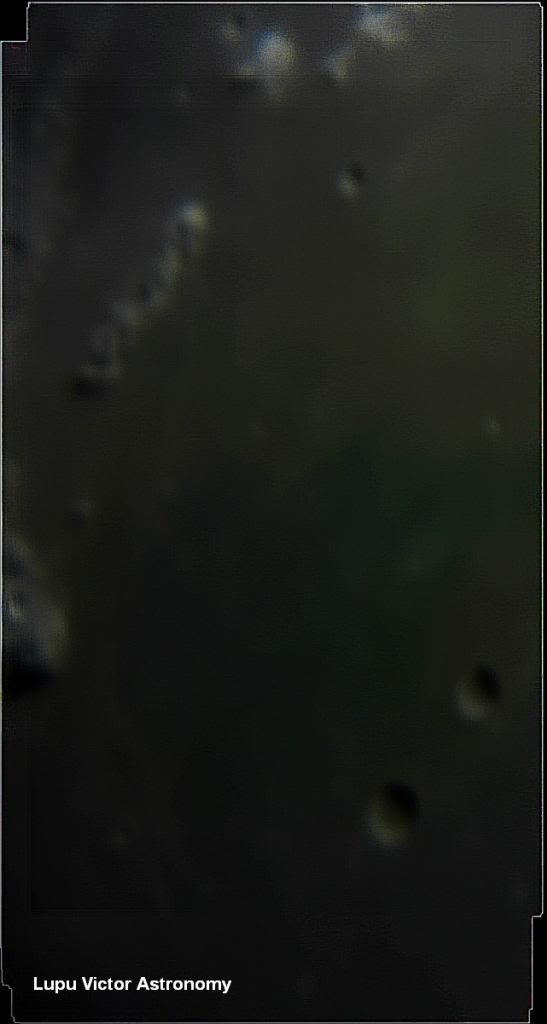 |
| Le Verrier (20 km) and Helicon (25 km) craters. 24 frames at 100% quality |
 |
| Le Verrier (20 km) and Helicon (25 km) craters. 31frames at 100% quality |
Le Verrier (20 km) and Helicon (25 km) are two craters located on the Mare Imbrium smooth plateau, south-east of Sinus Iridium. The two form a nice duo in an area devoid of other notable craters.
Helicon, is bigger in size as Le Verrier, but both have the inner edge terraced, and despite its small size, both have even a few mountain peaks on their floor. On the southwest rim of Helicon is a small crater called probably Helicon A.
The two images above are from a video processed in Registax program in which were used few frames, but the best of them. The Sun shines from the west if you are on the Moon. Note shades of colors on Mare Imbrium.
Age of the Moon: 9 days
Phase: 75% (0% = New, 100% = Full)
Distance: 392.049 km
Optics: Celestron C8-Newtonian telescope, 20mm Plossl, 2x Barlow
Mount: CG5 (EQ5)
Camera: Sony CX130
Filter: no
Date: 03/03/2012
Location: Baia Mare, Romania
Processing: Registax, FastStone Image Viewer










 Monday, April 22, 2013
Monday, April 22, 2013
 Unknown
Unknown








